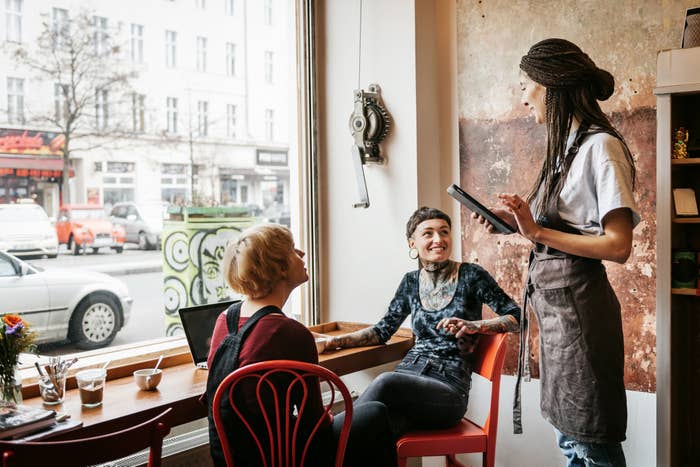When you walk into a restaurant, you probably notice how friendly the host and waitstaff are, what the ambiance feels like, what kind of cuisine is on the menu and who else is dining there. But you’re not the only one taking in your surroundings. Restaurant servers are also likely sizing you up and figuring out what kind of dining guest you’ll be.
“[Being a server] teaches you how to read people’s behaviors on a dime,” Kelly Ennis, who was a server for about 15 years, told HuffPost. “You can tell when you walk up to a table if they’re in a bad mood, if they’re in a rush … It’s [all about] understanding body language and developing a rapport quickly.”
We asked long-time restaurant servers what they’ve observed about their guests when they’re dining out and why that’s important to their jobs.
They observe how you respond when they introduce themselves.

When your server first comes by your table, are you scowling at the menu with your arms crossed? Do you stop what you’re doing and listen to them?
“There were folks [who] would come in … and barely acknowledge you and couldn’t remember what you look like,” recalled Chuck Anderson, who was a server for about 20 years. He said even just calling your server by name and saying “please” and “thank you” goes a long way.
“To me, the biggest indicator that someone was going to be friendly, or at least nice, is eye contact,” shared Darron Cardosa, a former server for about 25 years and blogger of The Bitchy Waiter. He thinks customers don’t often recognize how simple gestures like this can improve the relationship between them and their server.
They can tell a lot about the dynamics at your table.

When you sit down at your table, servers usually notice who you are dining with, Simon K., who has about six years of serving experience, explained.
“Is it two friends? Is it a date? … You fish those things out just by talking to the guests and find out why they’re there,” he said.
If there are kids at the table, Simon tries to determine how well-behaved they are: “You don’t know how lax the parents are in terms of keeping the kid in their seats or letting them run around the restaurant, or how dirty underneath the table is going to be.”
Noticing these types of details can help a server gauge how much attention each table will need, how to space out the orders, how much time the cleanup will take, and what the overall bill may look like.
Another very telling observation for servers: how you treat others at your table.
“If someone is dismissive of their spouse, their date or their kids, then you don’t have much hope that they’re going to treat you better,” Cardosa said.
